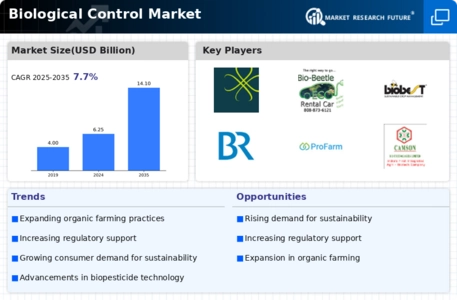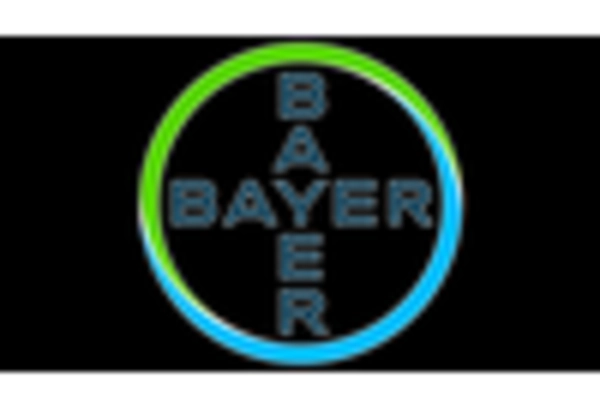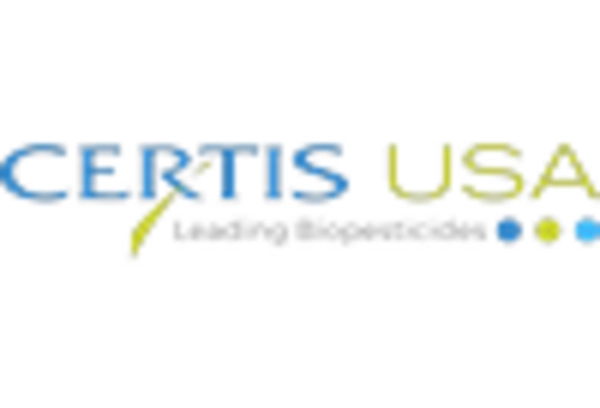Consumer Preference for Eco-Friendly Products
The Biological Control Market is significantly influenced by consumer preferences shifting towards eco-friendly products. As consumers become more informed about the environmental and health implications of chemical pesticides, they increasingly favor organic and sustainably produced food. This trend is evident in the growing market for organic produce, which has seen a compound annual growth rate of over 10% in recent years. Consequently, agricultural producers are compelled to adopt biological control methods to meet consumer demand, thereby driving the growth of the Biological Control Market and promoting sustainable agricultural practices.
Rising Investment in Research and Development
Investment in research and development within the Biological Control Market is on the rise, as companies seek to innovate and improve biocontrol products. This investment is crucial for developing new biopesticides and enhancing the efficacy of existing solutions. Recent reports suggest that R&D spending in the biopesticide sector could exceed USD 1 billion by 2026, reflecting a commitment to advancing biological control technologies. This focus on innovation not only supports the growth of the industry but also addresses the increasing demand for effective pest management solutions that align with sustainable practices.
Increasing Awareness of Sustainable Agriculture
The Biological Control Market is experiencing a notable shift as awareness of sustainable agricultural practices rises. Farmers and consumers alike are becoming more conscious of the environmental impacts of chemical pesticides. This awareness drives demand for biological control methods, which are perceived as safer and more environmentally friendly alternatives. According to recent data, the market for biopesticides is projected to reach USD 6.5 billion by 2027, indicating a robust growth trajectory. This trend suggests that as more stakeholders recognize the benefits of biological control, the industry will likely expand, fostering innovation and investment in sustainable solutions.
Government Initiatives Promoting Biocontrol Solutions
Government initiatives aimed at promoting biocontrol solutions are playing a pivotal role in the Biological Control Market. Various governments are implementing policies and programs that support the development and adoption of biopesticides as part of their commitment to sustainable agriculture. For instance, funding for research and subsidies for farmers adopting biocontrol methods are becoming more common. These initiatives not only enhance the visibility of biological control solutions but also encourage farmers to transition away from chemical pesticides. As a result, the Biological Control Market is likely to benefit from increased governmental support, fostering a more sustainable agricultural landscape.
Integration of Biocontrol in Integrated Pest Management (IPM)
The Biological Control Market is increasingly integrated into Integrated Pest Management (IPM) strategies. IPM emphasizes the use of multiple control methods, including biological control, to manage pest populations effectively. This integration is driven by the need for sustainable pest management solutions that minimize chemical use. Data indicates that the adoption of IPM practices has led to a 30% reduction in pesticide use in certain regions, showcasing the effectiveness of biological control methods. As more agricultural sectors adopt IPM, the demand for biocontrol solutions is expected to rise, further propelling the growth of the Biological Control Market.


















Leave a Comment